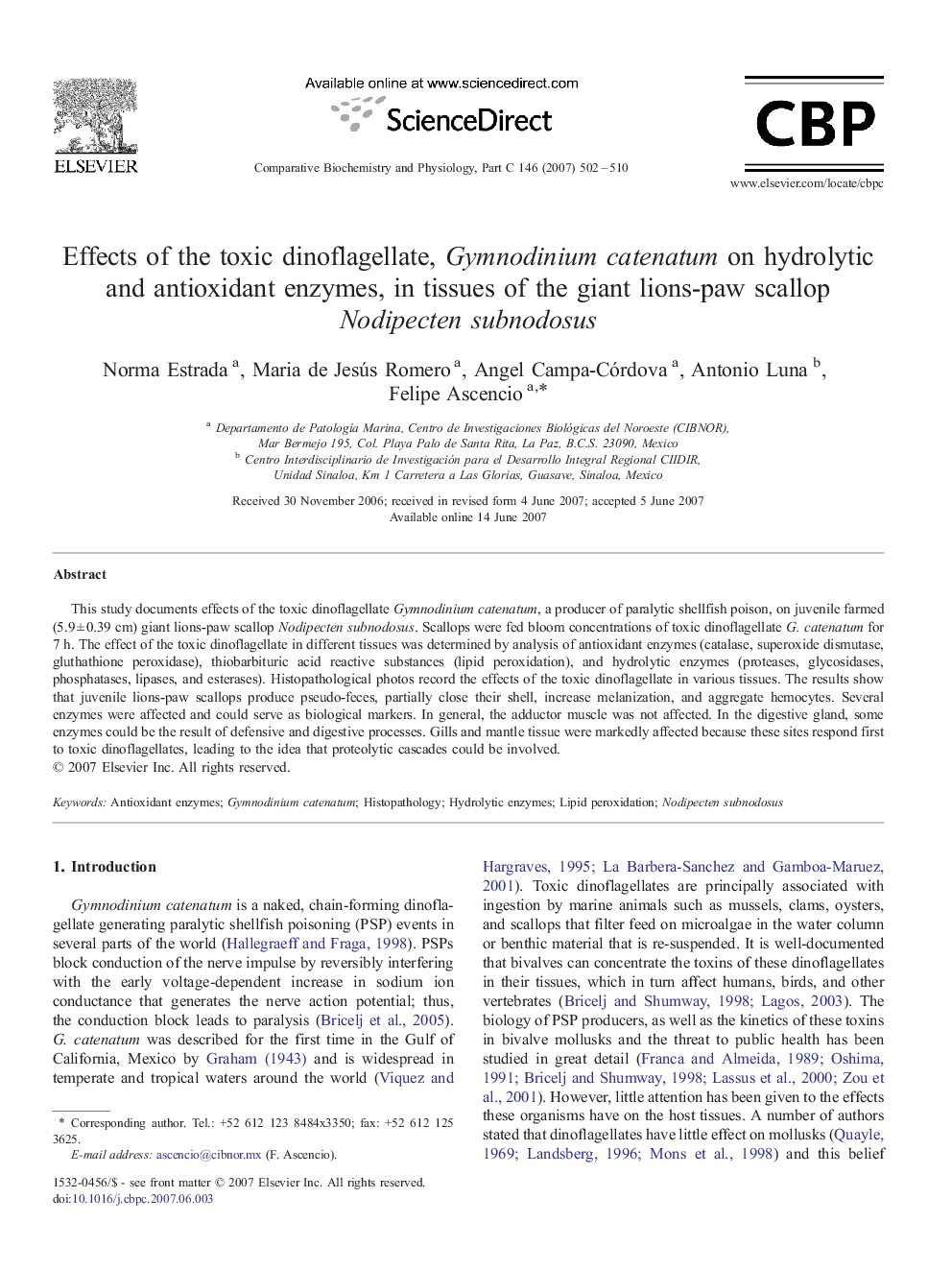| Article ID | Journal | Published Year | Pages | File Type |
|---|---|---|---|---|
| 1977909 | Comparative Biochemistry and Physiology Part C: Toxicology & Pharmacology | 2007 | 9 Pages |
This study documents effects of the toxic dinoflagellate Gymnodinium catenatum, a producer of paralytic shellfish poison, on juvenile farmed (5.9 ± 0.39 cm) giant lions-paw scallop Nodipecten subnodosus. Scallops were fed bloom concentrations of toxic dinoflagellate G. catenatum for 7 h. The effect of the toxic dinoflagellate in different tissues was determined by analysis of antioxidant enzymes (catalase, superoxide dismutase, gluthathione peroxidase), thiobarbituric acid reactive substances (lipid peroxidation), and hydrolytic enzymes (proteases, glycosidases, phosphatases, lipases, and esterases). Histopathological photos record the effects of the toxic dinoflagellate in various tissues. The results show that juvenile lions-paw scallops produce pseudo-feces, partially close their shell, increase melanization, and aggregate hemocytes. Several enzymes were affected and could serve as biological markers. In general, the adductor muscle was not affected. In the digestive gland, some enzymes could be the result of defensive and digestive processes. Gills and mantle tissue were markedly affected because these sites respond first to toxic dinoflagellates, leading to the idea that proteolytic cascades could be involved.
